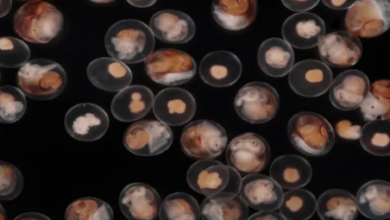“Illuminating Insect Behavior: Shedding Light on the Mystery of Artificial Light Attraction”

The mesmerizing sight of Insect Behavior circling around artificial lights has long puzzled scientists, but recent research utilizing high-speed infrared cameras offers intriguing insights into this behavior. Contrary to previous theories suggesting that insects are either blinded by light or attracted to it as an escape route, the new findings propose a different explanation for this phenomenon.
READ: Navigating Amsterdam’s Waterways: A Canal Cruise Experience
Insect Behavior
Researchers, led by entomologist Samuel Fabian of Imperial College London, conducted field experiments in Costa Rica using high-speed infrared cameras to track the flight patterns of various insects around artificial lights. The study included wild insects from 10 orders, encompassing moths and flies, which were observed circling endlessly around hanging or standing lights. Surprisingly, the insects consistently kept the lights at their back during flight, even if it resulted in crash landings.
This behavior challenges existing hypotheses and offers a novel explanation for the phenomenon of insects flocking to artificial lights. One prevailing theory suggested that insects may mistake human-made lights for the moon and use them as a compass for navigation. However, the recent research indicates that insects may lose their sense of direction when exposed to artificial lights, causing them to fly in circles or even dive toward the ground.
The study’s results imply that flying insects may turn their backs on the sky’s light to keep their feet pointing toward the ground, a strategy that is effective until the advent of LED lights. While pilots flying planes have various tools to determine which way is up during acceleration, insects may employ a similar mechanism by turning away from the light source to maintain a consistent orientation relative to the ground.
The research sheds light on a long-standing mystery surrounding the behavior of moths and other insects around artificial lights, providing a simpler and more satisfying explanation than previous complex theories. It challenges the conventional wisdom that insects are intentionally flying toward the light and highlights the importance of understanding how artificial light affects insects’ orientation.
The implications of this research extend beyond unraveling a natural curiosity; it has practical implications for mitigating the negative effects of light pollution on insects. Artificial lights, especially those emitting LED, can disrupt the normal orientation and flight patterns of insects, potentially leading to ecological consequences. The study suggests that insects’ behavior is significantly influenced by the orientation of the artificial light source, providing valuable insights for designing light fixtures that minimize their impact on insect behavior.
The findings are particularly relevant in the context of increasing concern about the ecological impact of light pollution. As urban areas expand and artificial lights become more prevalent, understanding how insects interact with these lights is crucial for developing strategies to mitigate their negative effects. Light pollution has been linked to various ecological disruptions, including changes in insect behavior, disruption of ecosystems, and potential threats to biodiversity.
Further research is needed to explore the broader implications of artificial light on insect behavior, especially in different geographical regions and latitudes. Collaborative efforts among scientists are underway to investigate other unanswered questions related to light pollution’s effects on insects. Additionally, researchers are exploring whether modifying light fixtures to minimize the visibility of light could make streetlights less attractive to insects.
In conclusion, the recent study on insect behavior around artificial lights offers a compelling explanation for a long-standing mystery. The consistent pattern of insects keeping lights at their back provides valuable insights into their orientation strategies and presents opportunities to develop more insect-friendly lighting solutions. As the world grapples with the challenges of urbanization and ecological preservation, understanding and addressing the impact of artificial light on insects becomes increasingly important for maintaining ecological balance.




